

The land that Julian Acosta walks on is dry and cracked all over but at the same time, his feet sink down an inch or two with each step he takes. It’s the typical texture of a surface that shows that it was once covered in water and still retains a little moisture underneath even now.
The entire landscape in front of Julian should look and feel the same but during this dry season, a miracle happened and he brought us here to witness it. This is one of the few years in recent times that Mata Redonda Lagoon hasn’t completely dried up. The center is still covered in water and hundreds of birds fly over it and settle on the pieces of land. Among them are the jabiru stork, in danger of extinction.
“It has a lot of water,” says Julian, a 79-year-old rancher who has lived near the lagoon all his life, mainly in the Rosario community, in the San Antonio district of Nicoya, where the lagoon is located geographically. “The people who come to take photos of the birds there. That’s like a tourist center for us,” he points out.
Viewed on Google Maps, Mata Redonda Lagoon looks like the only little body of water in the middle of all the land area of Nicoya. The great Tempisque River also appears nearby, which feeds it during the dry season at high tides.
But Julian has seen it dry up for years, so the fact that it still has water in it today makes him happy. This miracle also means that his cattle and the cattle of other neighbors won’t lack water or grass— albeit somewhat parched— on which to feed in this wetland.
Since 2014, Julian’s family and 11 other families from Rosario have joined forces to face the merciless beating from the high temperatures of the dry season. They understood that nature alone was not going to provide them with food during the dry seasons, that they would have to innovate their practices to guarantee it. They also turned their gaze toward the Mata Redonda Lagoon that cried out to survive with them.
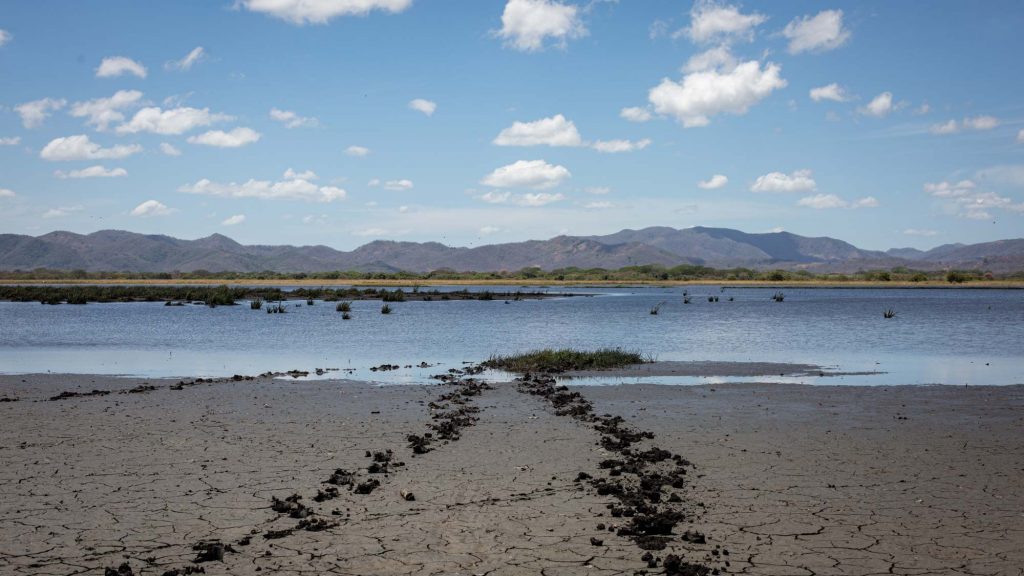
Cattle from the communities surrounding Mata Redonda Lagoon graze around it and depend on it to live. This is how it looks in March 2021. It’s one of the few times in recent dry seasons that it still holds a good amount of water. Photo: César Arroyo CastroPhoto: César Arroyo Castro
***
Since the 1930s, ranchers have taken their cattle to the Mata Redonda Lagoon to graze and even leave them there for hours, especially those who don’t have enough land to support them.
But for years, the water level of the lagoon has dropped, affecting wildlife and livestock. Those who have studied it attribute it mainly to sedimentation and have said that the area where it is located— in the lower basin of the Tempisque River— might lose its economic and biological productivity, especially if actions aren’t implemented to reduce and adapt to the impacts of climate change.
In 1994, the lagoon was declared a national wildlife refuge, a title assigned by the government to places that are key to protecting the most important habitats of flora and fauna. In that decree, the government granted permission for farmers to take their animals to feed there.
Since 2002, it also forms part of one of the 12 wetlands of national importance in the country— Palo Verde— according to the Ramsar Convention on Wetlands of International Importance aimed at conserving them. And here, cattle play a fundamental role.
As the cows walk, their steps contribute to controlling colonizing plants that are fighting to steal space from the lagoon and make it possible to form reflecting pools of still water that attract dozens of species of birds to this place. It is a cycle of interdependence between the cows, the community, the lagoon and the biodiversity.
“It’s not that it seems that it isn’t going to dry up; it’s that it doesn’t dry up,” Julian says with conviction, but he quickly qualifies his statement. “Unless the dry season drags out longer, because here in Guanacaste, we’ve had droughts when it’s July and it hasn’t rained. A little downpour and it goes away.”
Julian is referring to the 2014 drought, the most intense one in the country since 1930. Ranchers in Rosario in Nicoya— and practically everywhere in the province— saw one after another of their cattle die. It didn’t rain, there was no grass, there was no lagoon, and not everyone was prepared to face that situation. Losses due to the death of cattle in the Chorotega Region amounted to $6.5 million, according to estimates by the Inter-American Institute for Cooperation on Agriculture (IICA).
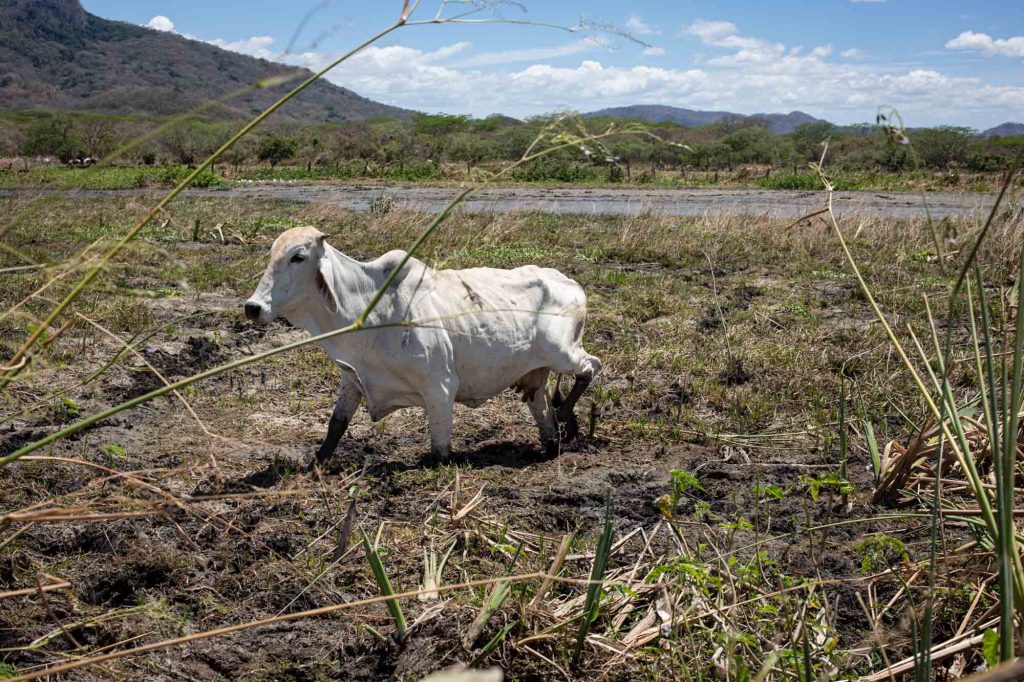
This is one of the few dry seasons when the Mata Redonda Lagoon has still had some water in it. Livestock from the surrounding communities drink from it and feed on the surrounding vegetation. Photo: César Arroyo CastroPhoto: César Arroyo Castro
The lagoon hardened to the point that cars were driving over it, says Julian. The wildlife refuge administrator, Jose Carlos Leal, and scholar Marcela Vargas from the Nicoya campus of the National University (UNA), also remembered this.
Vargas came to work with the Rosario community in those years. “You’d get there and it was all like toasted, yellowish. It made you thirsty,” she described. “It was a very strong image.”
***
That overwhelming chapter was necessary for Rosario to begin to unite and be part of making the miracle happen, because it is indeed a miracle in the making.
During that drought, they realized that the community would disappear if each one continued raising cattle in their own way, without joint efforts to have food during the dry seasons in order to have cows that would produce milk and allow them to subsist.
It was also urgent to work with the Tempisque Conservation Area (ACT), which the lagoon forms part of, in order to restore the ecosystem.
Since 2011, when agronomist Jose Carlos Leal began overseeing the refuge, he started to come up with ways to remove sediment and excessive vegetation, which at that time covered 70% of the wetland, according to ACT records. The solution mainly involved looking for funds to finance the hours of work that it would take for the community to eliminate invasive plants and sediment.
Later, in 2015, the refuge also managed to bring in machinery to speed up the removal of sediments. Now they also open and close a gate in the estuary for the tide to come in. Leal wanted to once again see the reflecting pools that had been there when he first saw the place.
“Many years ago, I would go to the lagoon to fish. It was a lagoon with a very large reflecting pool and many fish, even an excess,” Leal recalled. “In 2011, I came and the lagoon wasn’t such a lagoon. It was covered with vegetation,” related Leal.
At the same time, UNA— through the Mesoamerican Center for Sustainable Development of the Dry Tropics (CEMEDE)— began a cycle of trainings for Rosario cattle raisers, which helped them form an association to work together and implement planting improved pastures and storing bales of grass from the rainy season to feed them in the dry season.
Yorjani Acosta, Julian’s son, thinks the new ways of doing things changed their lives. “Before, we used to be like our grandparents, who liked to keep the whole herd of cattle and not select which ones produce and which ones don’t produce,” he said. “The advantage of our group is that if a colleague needs it, we go to that colleague’s piece of land to help him,” he added.
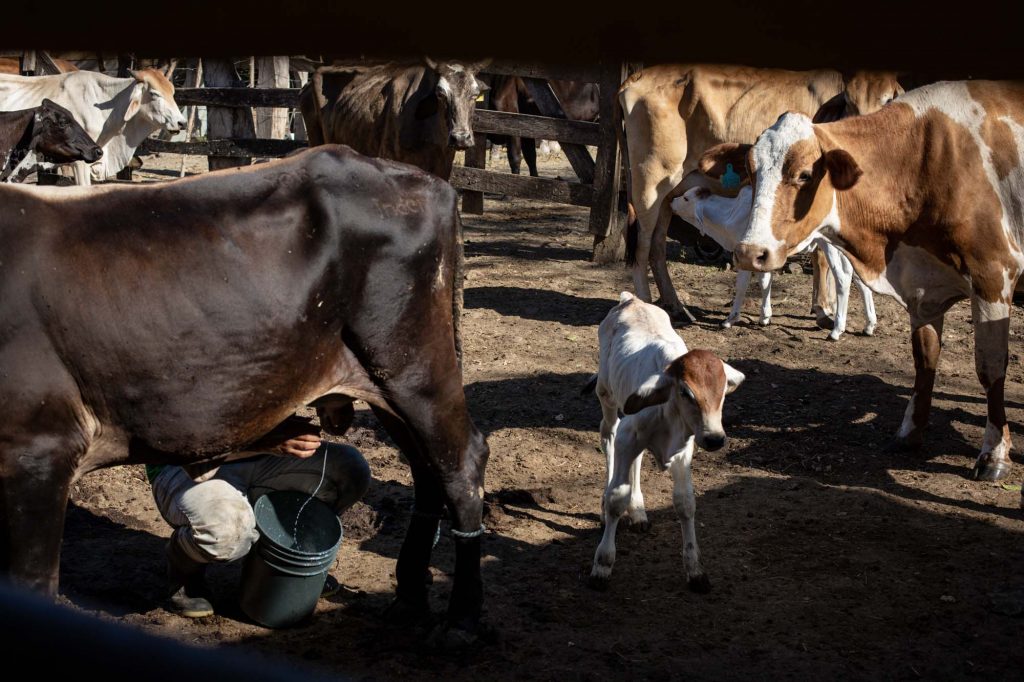
Yorjani Acosta milks a cow one morning in March. The 12 families that make up the Rosario Small Cattlemen’s Association milk by hand. They use calves to stimulate the cow’s udders and then extract the milk by hand. Photo: Cesar Arroyo Castro.Photo: César Arroyo Castro
It hasn’t been easy to adapt to the changes, admitted the president of the association, Ana Ureña, who heard about climate change for the first time in 2014.
“It’s part of nature and we didn’t believe [in climate change], until the years passed and we started understanding it,” she said, sitting on the back porch of her house where she has her wood stove and a few chickens.
“Maybe it’s not like a climate change, but rather, it’s a life change,” she mused. “We’re heading toward a change of life that isn’t good either for human beings or for nature, or for any living creature in this world.”
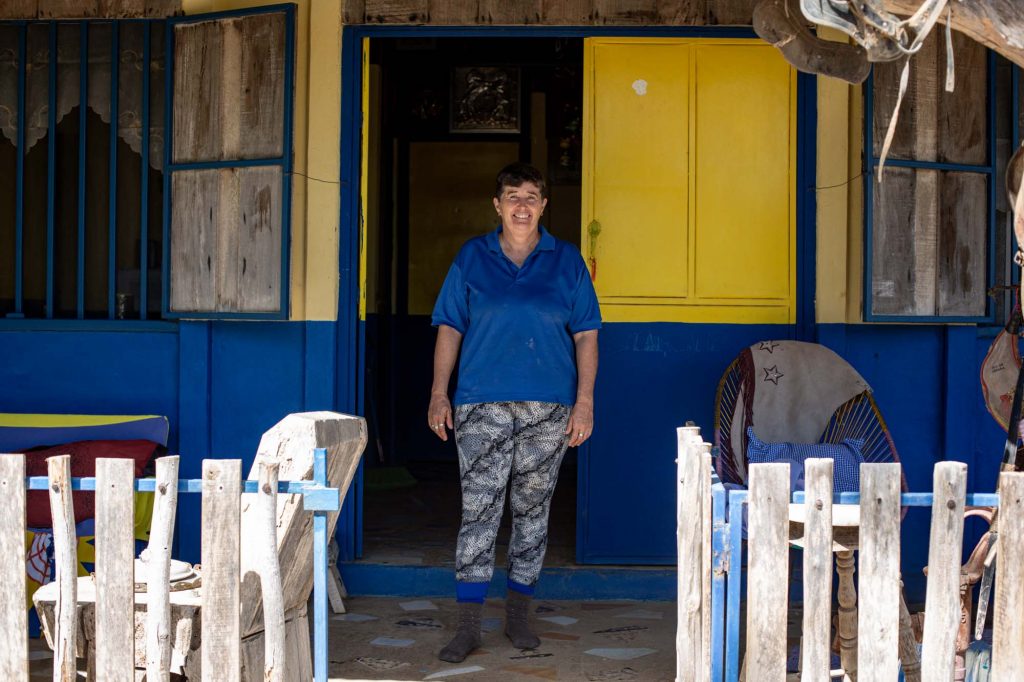
Ana Ureña, the president of the association, at her home in Rosario in the canton of Nicoya. She makes curd cheese that she sells, driving her car on a route that runs from Rosario to Nosara. Photo: Cesar Arroyo Castro
The ranchers used to sell the milk that they milk by hand to a man who would go to their houses to buy it from them, but in 2016, they managed to build a collection center. Julian let them use a piece of his land and UNA provided the milk tank, the scale and a roof that they were going to get rid of, explained Vargas. With raffles, soccer games and food sales, they managed to build the rest of the collection center’s infrastructure. And now they sell the milk to Sigma, a dairy company, which picks it up in the community every other day.
“People sometimes think that the university has come and I’m going to get something, right? And let’s see what the university is going to give us, and no, the university comes so that we build together, to be a team. The project has been a success because of that, because we have been a team, and they haven’t waited for everything to be given to them,” commented Vargas, who still continues to work with the community today.
Since the drought of 2014 hit, the town has been reborn. The 12 families that make up the association work and live better because of the new techniques to make sure there’s a food supply in the dry season and because of the restoration of the Mata Redonda Lagoon.
“They became empowered and began to wake up about a lot of things that they were capable of and didn’t know it,” said Vargas. And along with them, the lagoon also woke up. Now there’s more water, and there’s more life. While in 2013, 69 species of birds were counted, last year that number rose to 116, said Leal, the refuge administrator.
Ana considers adapting to climate change to be an ongoing process. Now they face an overpopulation of ants and ticks in the field and crocodiles in the lagoon. Cows have miscarriages and get skin cancer. “They’re inexplicable things for us but it’s part of nature,” but she said they have no alternative. “We have to keep changing with climate change.”


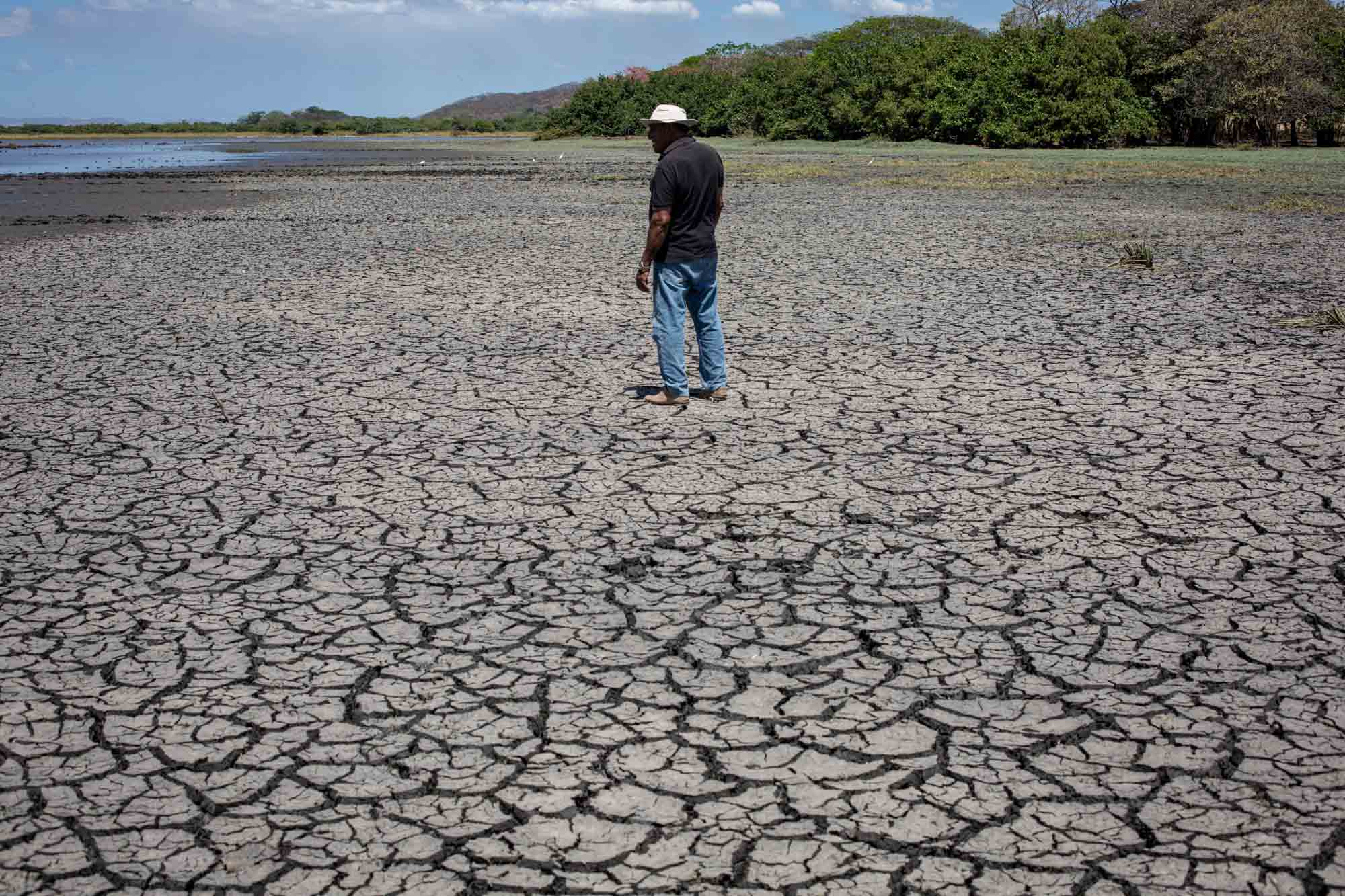

Comments